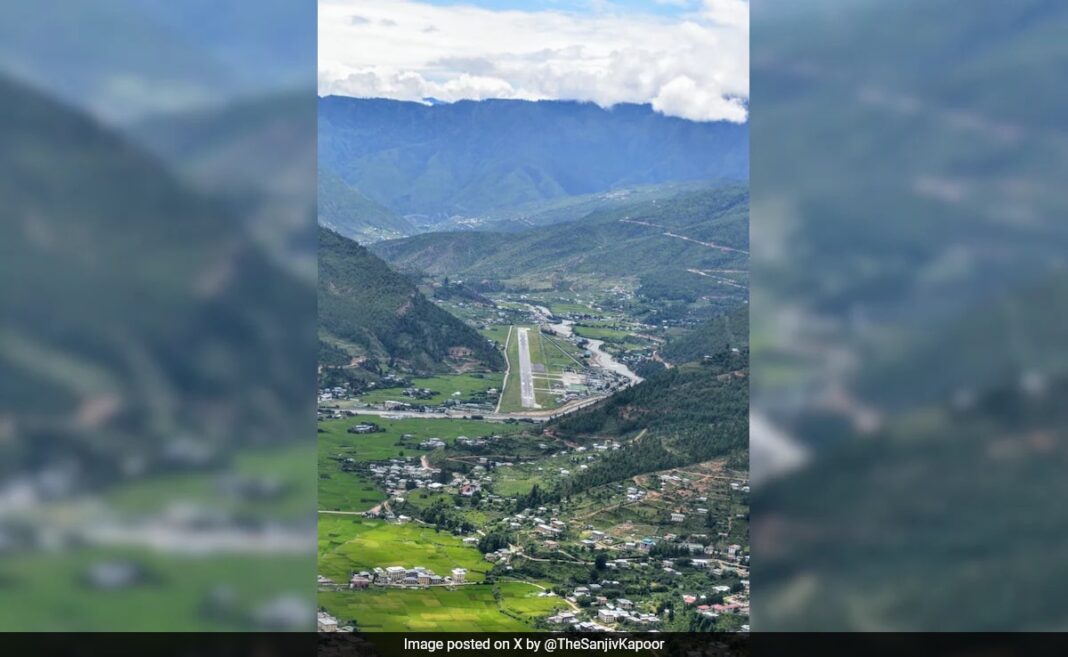[
]

Category C qualified pilots can successfully land at Paro
Nestled between towering Himalayan peaks and residential areas, Paro International Airport in Bhutan is one of the world’s most notorious airstrips. Its treacherous approach, requiring pilots to navigate between 18,000-foot mountains, has earned a reputation for its extreme challenges.
Only a select group of 50 jet jockeys worldwide possess the skill to master the demanding manoeuvres needed to land at Paro. The small, 7,431-foot-long runway, accessible only to smaller aircraft, necessitates specialized training and the ability to land without radar guidance. Even a minor miscalculation could result in a plane crashing into a nearby home.
Category C qualified pilots who can successfully land at Paro are celebrated as aviation daredevils, earning a reputation akin to the legendary Maverick from “Top Gun.”
“It is challenging on the skill of the pilot, but it’s not dangerous, Captain Chimi Dorji of Druk Air, a local carrier, told CNN.
“In Paro, you really need to have the local skills and local knowledge area competence. We call it area competence training or area training or route training from flying from anywhere into Paro.”
Watch this skilled pilot maneuver between mountains to land the Airbus A319-100 at one of the most dangerous airports in the world, Paro Airport, Bhutan. pic.twitter.com/JjqeDFpFTH
— Planesanity (@planesanity) June 4, 2024
In a country where 97% of the terrain is mountainous – with Paro sitting 7,382 feet above sea level – the thinner air also means aircraft move faster, explained Dorji.
“Your true airspeed remains the same, but your ground speed increases due to the thinner air.”
Even if pilots manage to navigate through the narrow approach window for a proper landing, another major challenge in this remote Asian kingdom is the unpredictable weather.
The next critical factor to consider is the weather.
“We try to avoid flying after noon because that’s when thermal winds pick up. The temperatures rise, the rains haven’t arrived yet, and the land is dry, creating updrafts and anabatic/katabatic winds in the valley,” said Dorji. “Mornings are much calmer.”
However, the monsoon season, which often brings hail the size of golf balls, presents a whole new set of challenges.
“We get strong northwesterly and northeasterly winds coming from China, leading to periods of continuous rain,” the pilot explained.
Since radar is ineffective in this area, no night flights are permitted at any time.
And, of course, there’s always the risk of crashing into the surrounding mountains, which Dorji simply referred to as “obstacles.”


